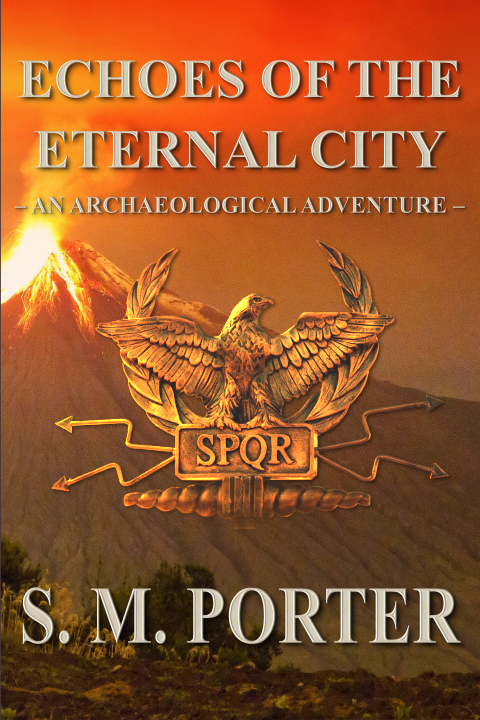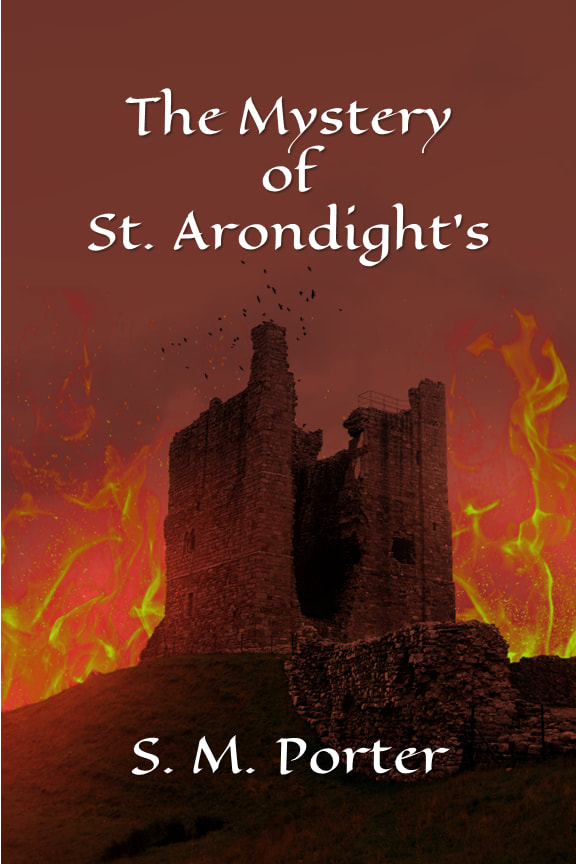|
I was asked an archaeology question recently that made me realise something about myself. First a bit of background, Over the last two years I’ve been running a number of large and extremely stressful sites. One of which now holds status as the biggest, most complicated and one of the most stressful of my career (most stressful is a title currently held by another site, with lots of issues). This huge site was an evaluation consisting of 1,172 trenches on a site so vast it was split by a major A-Road and took 20 minutes to drive end to end via the road (trust me you do not want to know how long it took to track the machine through the fields). I also undertook the first phase of mitigation work shortly after, where we found a collection of Saxon houses that, miraculously, our massive evaluation had managed to miss (what are the odds? – actually much higher than you’d think). As part of this project I talked to the local archaeology group (lecture is online here) and I had to give a small presentation to the local school and have the class come out to site to see the Saxon houses. The school visit was awesome, kids ask the best questions and this lot were really on the ball. Anyway, this brings me to the question I was asked. It was a simple one and one that I’ve actually been asked quite often: “What made you want to be an archaeologist?” Most people in my age bracket will give you the standard Time Team answer, or the generic 'always interested in history answer', (both of which I have given previously as my professional reason, however, neither is true). One or two others may give you the mistaken identity answer, and insist that their original intentions trended towards dinosaurs. Not me. My real answer, the one I never tell people, is far more embarrassing! It is honest though, and it reflects who I am and why I do what I do – I suspect it also explains part of my site management style and maybe why people seem to like working with me (I’ve never understood why people like working with me, generally from where I’m standing everything looks like chaos and not the organised kind!). My answer then, my hugely embarrassing real and honest answer that I decided to tell this collection of highly inquisitive school children: Did you ever see Indiana Jones and the Raiders of the Lost Ark? (if not why not? Go and watch). It’s not the treasure, or the Nazi punching, or even the fedora and bullwhip. It’s the scene in the map room in Tannis. We all remember it right? Indy has snuck onto the Nazi excavation and dropped down into the map room with his staff of Ra. First thing he does, have a look at the room, pull out his notebook, intense concentration as he cleans sand off part of the map looking for the correct place to put the staff of Ra. Then the anticipation, waiting and watching as the beam of sunlight hits the crystal in the staff and travels slowly across the map to reveal the location of the Well of Souls. The expression on Indy’s face as his quest so far pays off – he has the location of the resting place of the ark! That, that scene, the reward for patient research and unlocking the puzzle, the acquisition of knowledge. Everything on Indy’s face in the map room scene, that is why I do my job. That is also how I still feel when we find something amazing, like the Saxon settlement on the site that we were talking about. I’ve done my job for 16 years, and sure, I don’t have an awesome John Williams score playing in the background whilst we work, but the excitement is there. And you know what I realised by talking about this scene being the reason I got into archaeology? That this is not an embarrassing reason for choosing my career. Sure, I have to admit that I’m an archaeologist because I watched Indiana Jones at the age of 9/10 and it will always get me odd looks from colleagues who like to tone down the Indiana Jones element of archaeology publicity, but it’s the truth, and it wasn’t the flashy Hollywood elements that caught me, it was the idea of research leading to knowledge. And that is what it’s all about. Learning new things, furthering our understanding of the human story. And what I realised about myself is that despite everything that my career has thrown at me, short contracts, terrible companies, god awful sites (some so awful they will never again be referred to by name), extreme heat, extreme cold, extreme rain. I’ve fallen down holes, I’ve had sites without toilets, I’ve been yelled at, spat at, chased with actual pitchforks, exploded a wheelbarrow and on one memorable occasion been reported to the police (huge misunderstanding involving a trench in a cricket field on match day), I love it. I love the easy days, I love the stressful days, I hate the commercial BS that artificially suppresses wages and makes the whole thing periodically feel like an abusive relationship that I can’t escape, but I love the wonderful weirdos I work with, and more than that, I love that it’s actually not so far removed from Indiana Jones as it seems. I’ve travelled the country, worked on a Roman Arena in Chester, an Iron Age hillfort in Manchester, a Medieval toilet in Salisbury, a Saxon graveyard in Bicester, a ridiculously huge, concrete interwar aircraft catapult Oxfordshire, held 300 Roman coins in my hands. I’ve walked the length of Hadrian’s Wall, I’ve been inside an Egyptian pyramid, I’ve stood alone on the floor of the Colosseum in Rome at and looked up at the midnight sky. And all because Harrison Ford nailed his acting in that map room scene. However, as Indy himself says in Raiders ‘it’s not the age, it’s the mileage’ and I have to admit that I’m tired. Current under budgeting and understaffing trends in the industry, failed opportunities to change how we work for the better, rapidly elevating stress levels in all parts of the industry, and feeling like an unappreciated cog in the machine make it difficult to enjoy the job. For the last few months following a particularly awful site and some terrible company behaviour about it, I’ve been in a personal hell wondering whether to throw it all away and leave archaeology completely. But the simple truth is I don't want to, I’m delighted to discover that even though I’ve done this every day for 16 years, I can still feel as moved by a new and unexpected find or feature as I did the first time I watched that scene in the map room.
Two weeks ago I watched Raiders again and do you know what, that map room scene, I’ve seen it a million times but my heart still beats faster, my breathing is faster and every hair on my body stands on end, that scene still gives me chills. That scene still shows me that the pursuit of knowledge is worth it and tells me that I'm still a dreamer, and that it's not time to leave the field just yet, but rather time to find a new place for adventure. So, what made me want to be an archaeologist? Indiana Jones. And at the grand age of 80 Mr Ford has made Indiana Jones 5 and I believe still did (or at least attempted) his own stunts. So, there’s further inspiration, maybe, just like Indy I’ll still be on site slinging dirt when I’m 80. Unless of course Indy 5 turns out to be Indiana Jones and the post-excavation report backlog – for gosh darn sakes man write your site reports! And just in case Mr. Ford should ever read this humble blog post, when you’re done with the fedora, jacket and bullwhip, can I have them?
0 Comments
A bit of fun I thought of whilst doing my last site before Christmas. (though I'm not writing the whole thing out 12 times we'll just pretend the rest of the song happened and start on day 12) Here we go: On the 12th day of Christmas my site gave to me: 12 bits of Painted Wall Plaster, 11 Fragments of Pottery, 10 Frozen Sample Buckets, 9 Scrappy Bits of Netlon, 8 Angry Badgers, (actually the ecologists cleared out the badgers so we didn't see any), 7 Chilled Archaeologists, (they are in the picture, honest), 6 Red Flagged Ditch Slots, 5 Roman Coins, 4 Frosty Postholes, 3 Abandoned Wheelbarrows, 2 Yellow Dumpers, And A Piece of Flint Shaped Like a Pistol Merry Christmas All!
(and yes I did have far too much fun with that flint pistol, just call me Archaeology O'Seven)
It has been a busy year or two for UK archaeology. Huge infrastructure projects, great discoveries and generally good press.
Although, it’s not all good news. It may have gone quiet again but the government’s proposed new ‘white paper’ for housing and development is still lurking in the background with its somewhat worrying statements which make it unclear how archaeology will fit into the future of development (although my MP’s response to a letter I sent him was fairly positive where archaeology and heritage are concerned). There has also been a squeeze on archaeology courses, the A-level qualification is long gone and last year the archaeology departments of the University of Sheffield and the Chester University fought (and lost in the case of Sheffield) difficult battles against closure – this despite Sheffield’s being one of the best in the world. On the other hand, there are huge infrastructure projects, which require a phenomenal number of archaeologists to undertake excavation and preservation of heritage by record prior to construction actually beginning. As such there is a national shortage of archaeologists. One solution to this issue is to train new field archaeologists on the job. There has been resistance to this idea in the past. Most current archaeologists (both field and lab) have degrees, a large number have Master’s degrees and some have PhD’s before arriving as commercial field archaeologists. It’s not always the case, I’ve worked previously with a field archaeologist who had no qualifications whatsoever and learned everything about archaeology ‘on the job’. He wasn’t always the easiest to get on with, but damn, he knew stuff. I recall vividly phoning him at one point during a tough watching brief to ask what the hell I should do, because I knew he’d know the answer. As such, I’ve always been of the opinion that field archaeology, both theory and technique is something that is perhaps best learned on the job. That’s not to suggest in any way that an archaeology degree is pointless, just that it doesn’t always prepare us for the reality of commercial archaeology in the field and maybe some of us should think about being less snobby about it. I know I was lucky, I managed to do seasonal work on a university excavation every summer for six years before I got my first job in commercial archaeology (stupidly whilst I was still writing up my MA dissertation). Like my book character Suze, I was there at 15/16 spending every moment of those summers, (when I wasn’t working at Argos night shifts and weekends) learning how to do things. But even this didn’t prepare me for commercial archaeology. It needs to be done fast – none of this two weeks in the same ditch slot with a trowel stuff, and mattocks are tough to get to grips with when you’re 5ft dead, and built like a tiny ballerina. I learned more in my first year as a commercial archaeologist through trial and error and cocking things up, than I did on my uni sites (and I’m still learning every day how to do things better). Which is why I think structured learning on the job is a great way forwards, and if my recently graduated group of trainees are anything to go by then training on the job can and will produce skilled archaeologists who really understand how the field aspect of commercial archaeology works, in a much shorter space of time.
But the training was intensive! Oh, so intensive. Normally I’d be running a site but for three months (March-June 2020) I was working exclusively as a fieldwork trainer with new to sector trainees with zero archaeological background. We started with 10 fantastically enthusiastic trainees, five were assigned to myself and five to another trainer, although on the same site. And oh man, although only eight completed the course and stayed with us, they have blown us away with what they’ve achieved! The five that I was working with came from diverse backgrounds – one previously worked for television, one in costume design, one was an actress (she’s met Tom Cruise!), one was previously a geologist and one used to fit air conditioning units.
We were together for an intensive 12 weeks, working on a massive site, choc full of archaeology. It was (and still is) a phenomenal site and they are so lucky to have had such a start to their careers – I recall my first commercial site as a fairly barren evaluation in Stowmarket, but this one covered almost everything; several periods all overlapping, burials (both human and animal), structural remains, evidence of industry. Roman coins – hell, I was a supervisor before I found my first coin. I’d been working commercially for four years before I was able to excavate my first skeleton – one of my trainees was excavating a skeleton (under very careful supervision and with assistance) at the start of his second week! We were also trialling a new form of recording – all digital, which means that I was learning too and actually found myself at the point where they had to show me what to do. It was an absolute dream of a site to use for training. We had a few issues with the tools to begin with, as I said above mattocks are unwieldy if you’re small or simply not used to manual labour, which is why I keep a tool box full of a random assortment of digging implements, it’s not the size of your tool that’s important, it’s what you do with it! (yeah, know what I just said – take your mind out of the gutter!). Sure, we want everyone to be able to wield mattocks and shovels with the skill of a master zombie slayer, (Spovels* are better though), but until someone has built up the strength to use the big tools proficiently, the smaller ones are an excellent way to build confidence, and maintain a good work pace, meaning that people don’t feel like they’re falling behind or failing. A factor which is important for morale and keeping everyone invested in what we are doing.
Alongside field work we were also undertaking some really intensive classroom sessions. Each of these was a day long and endeavoured to explain everything from taking photos and drawing sections, to the differences between how we excavate rural sites and urban sites and all the types of post-excavation reporting that can be produced. The classroom sessions were the worst for me, I can impart wisdom and crack wise on site, and I’m more than happy to tell anyone the mistakes that I’ve learned from, or demonstrate the best shovel technique but give me a powerpoint to present and no matter how well I know the material I will suddenly find that I have less bones than a jellyfish and fewer brain cells than a senile goldfish. There were only five of them for goodness sake and by the time I did our first on site classroom session I knew them all well enough, but it didn’t stop me from nearly fainting twice and stammering my way through.
To be honest I wanted to write this blog to explain how I’d taught my trainees to excavate and record, how we’d worked through things and gradually built up their techniques. However, if I’m brutally honest with myself, I’m not so sure I did anything more than talk about archaeology and complain that I was hungry – (I was on break at 10:30 rather than the usual 10 and apparently that half hour with me pacing around site was like being circled by a hungry shark!).
However, all joking aside, my group of trainees worked really hard, listened to everything I and others on the site said and I know for an absolute fact that they were far better equipped, and understood far more about how commercial archaeology works than I did three months into my career. It could be that I worked at the wrong places perhaps, but I’m sure I’m not the only one who felt lost for the first few months or even years of their career. Other site staff who looked at the workbooks that we were using remarked that they would love to actually sit down and go through it, or sit in on the classroom sessions and revisit the basics. It is certainly worth it, heck, some of the things in their workbooks I didn’t know, especially where urban archaeology is concerned. (I’ve been in the job 14 years and I can count on one hand the number of urban sites I’ve done).
After the 3 month intensive session my little group was deemed worthy to be left to their own devices without a trainer constantly watching over their shoulder. For the next three months they were on their own, except for the site supervisors and sporadic visits from myself and the head of the training programme. By the time I went back our group of trainee staff were well integrated into the field team, checking records, logging finds, and actively participating in discussions with supervisors about the interpretation of not just their features, but whole areas of the site. Of the eight who still remain with us from that original group, most are now starting to ask how to progress their career, what they need to do to become supervisors or move into a specialisation in pottery or a specific period. It is so satisfying to see such enthusiasm to take what they have learned and build it into a career. I know some of them are hoping to be able to work with new trainee groups themselves eventually. This experience has reinforced my opinion that we can train good archaeologists on the job. Perhaps I was lucky with this group, they’d all had previous careers and know how the world works. Maybe it would have been different had they all been sixteen, who knows, but I think anyone with a genuine interest in archaeology will excel, and I look forward to taking everything that I’ve learned from the newest members of our site team and passing it on to others. With luck this will be a positive step towards making archaeology as a career more diverse, inclusive and accessible, which can ultimately only make it better. On a slightly more personal note I would like to thank my company MOLA for giving me the chance to be a field trainer and letting me spend 3 months of the year sharing my own enthusiasm for my job, my experiences, my skills, my random stories with our new archaeologists, to whom I should also extend thanks. They all worked really hard and I wish them a long and enjoyable career, may our paths cross again. There are currently no vacancies available on either our trainee or graduate courses, but keep checking back for more information here: https://www.mola.org.uk/about-us/work-us/early-careers *spovel – the unholy offspring of a spade and a shovel, flat like a spade, curved like a shovel, my weapon of choice, perfect for everything.
Your first winter in commercial archaeology is usually the worst and those who survive it will more than likely continue in their archaeological careers for many years to come. There is however a knack to getting through it.
Whilst the UK doesn’t have the coldest winter’s per-se it does have some pretty wet, nasty and downright miserable ones. It’s also worth remembering that January and February tend to be much worse than November and December with January often bringing snow and heavy rain and wind. So, for those who find themselves struggling with the reasonably mild temperatures on the run up to Christmas, unfortunately it is only going to get worse before it gets better. But remember, everyone on site is cold, some may be colder than others – we all run differently. Personally, I have terrible circulation and lose feeling in my fingers as soon as the temperature drops below 5 degrees, I often can’t feel a thing (or answer my phone properly) between the end of October and the middle of March. So far my fingers haven’t fallen off and this will be my fifteenth winter in the field.
So, as a commercial field archaeologist how do you survive the winter? Here are my top tips:
Ultimately we all have to find what works for us and yes we are all going to be cold for a significant portion of the day – especially the poor person stood watching the machine strip the field, (snot icicles are the worst) Just remember not to warm up too fast, increase your exposure to heat gradually, your joints, muscles and blood vessels will thank you for it. And remember if you really are cold and shivering, don’t keep it to yourself – tell someone, the average temperatures in the UK mean it’s unlikely that you’ll get frostbite or be hypothermic, but we all have different circulation and different tolerances for high and low temperatures. Don’t suffer and put yourself at risk, there may be a different task that could be done.
If you have any better tips, or there’s something I’ve not covered, please add it in the comments. I’m always hunting for advice on staying warm!
I’ll admit I was both rather excited and a bit unsure about the Green Knight movie when I saw the first trailers. The legend of Gawain and the Green Knight is one of my favourites of the Arthurian cannon, in fact Gawain is one of my favourite knights of the round table, which is why two of his legends ended up in my own novel ‘The Mystery of St. Arondight’s’. However, reviews of the film were good and I do rather like Dev Patel as an actor. Unfortunately, with work commitments, an ongoing pandemic and no open local cinema I missed the film’s initial shot on the big screen (it appears that some cinemas are currently showing it, though not many). Trawling for something to watch on Saturday night though, I spotted that it was now available to watch on Amazon Prime.
A little background first for those who do not know the story of the Green Knight, this is a tale of the honour of Gawain, a story in the Arthurian mythology to highlight the qualities of this, the best and most loyal of Arthur’s knights. At least that is the case in the anonymous poem Gawain and the Green Knight and its subsequent inclusion in the Morte D’Arthur by Sir Thomas Malory in the 15th century. It is possible that the story has much older roots and relates to old Welsh tales, however, there is no time to go into all that now as I want to concentrate on the film.
I was initially very curious as to how a two hour film (run time 2hr 10) would be made of a story that can be summarised in a few lines, so for the sake of argument I’ll do it here. Arthur and his knights are at court for Christmas, the Green Knight bursts in and issues a challenge, ‘a blow for a blow,’ meaning a knight can strike him today and meet him in the green chapel a year hence for the return strike. All seems well, Gawain gets up and thinking to outsmart the Green Knight lops his head off. End of the story you might think, but the jolly Green Knight picks up his head and demands Gawain meet him in one year so that he can return the strike. One year passes at Camelot and Gawain heads off to seek out the Green Knight, stopping at a castle along the way where he enjoys the company of a hunter and his wife. As long as Gawain stays with the hunter they agree to a gift exchange, the hunter will give Gawain anything he kills in the forest that day if Gawain gives the hunter in return anything that came to him in the castle. Unfortunately for Gawain, the lady of the castle tries to seduce him, and he rebuffs her, although allows her to kiss him, then of course having to pass these kisses on to the hunter when he returns, as per the deal. On the final day the lady gives Gawain an enchanted sash, claiming that whilst he is wearing it he will not be harmed. As our hero reckons the Green Knight will chop his head off he accepts this and fails to give it to the hunter when he returns. Then Gawain heads off to the Green Knight to complete his challenge. Gawain flinches at the first swing of the Green Knight’s axe and the Green Knight chastises him for it saying that this attempt does not count as he never flinched when Gawain struck him. Gawain does not flinch the second time but the Green Knight holds back his swing, this makes Gawain angry and he demands that the knight play the game properly, which he does, leaving a cut on Gawain’s neck and revealing himself to be the hunter (cursed to appear as the Green Knight and issue this challenge. The cut that Gawain received is because he hid the enchanted sash, however he is declared the most honourable knight of the realm, (which may say more about the rest of Arthur’s knights than it does about Gawain). He returns to Camelot triumphant, but wears the sash always to remind him of his failure and to always behave with honesty and honour.
So, a relatively short and simple story to turn into a long film. ‘The Green Knight’ keeps the bones of the original story, and actually sticks much closer to the original text than previous films, such as ‘Sword of the Valliant’ (1984) did. Of course the film makes some alterations and additions to the story (as has every storyteller through the ages), but this is a good retelling of the traditional Green Knight legend. Our hero is not yet a knight, this is the tale about how he became a knight. He is flawed, a far cry from Malory’s shining medieval knight in armour Gawain, but this is what makes the character interesting, (also I learned within minutes of the film starting that I may have been pronouncing Gawain wrong all my life, I tend towards Ga-Wayne, whereas the film calls him Ger-win). We also see a different portrayal of King Arthur, he is barely present within the story (he doesn’t need to be) but he is old, wise and clearly troubled by his history. Merlin too lurks on the sidelines, never referred to by name but obvious in his actions. There are witches and magic too, the film does not ignore the magic of the Arthurian legends it embraces it. This world is one where magic and humanity live side by side in a grubby early medieval style world, full of sweeping open landscapes and dense woodlands.
The tale unfolds much as the legend usually does with Christmas eve at Camelot – although Gawain has to be dragged from the bed of a harlot first (not something Malory’s Gawain, that gleaming scion of propriety, would be caught doing), but a realistic enough portrayal of a young man with nothing better to do and a way of showing us that this Gawain is a bit of a deadbeat. The Green Knight himself is beautifully done, part man, part tree; he appears as if kin to the tree folk of the Lord of the Rings Trilogy (indeed Tolkein himself wrote a version of the Green Knight myth and his LOTR characters draw a lot from the Arthurian cycles).
The film is well shot with gorgeous panning scenes and soft lighting, although a large portion of it takes place in darkened scenes where subtle gestures and symbolism was not always easy to see on the small screen. There are also several characters and plots through the film that are never clearly defined and can be interpreted in many ways. For example, the fox that travels with Gawain for a time could be a magic guide from his mother (a witch), or a manifestation of Gawain’s fears as he faces his destiny. Alternately it could be a spirit guide like Homer’s chili space Coyote in The Simpsons. I feel a second watch of the film will bring the reasoning for the fox and a few other elements to light a little more. Gawain’s fear of destiny and the results of his potential choices are shown several times throughout the film too, which lead to some non-linear sequences that may throw off viewers who are not paying attention.
I feel that the film may have missed a trick with another legend of Gawain that could have fitted well into the story. Gawain and the lady Ragnell is another of the more famous Arthurian tales. A hideous lady comes to court looking for a husband, an unmarried Gawain accepts her hand as per his honour and they are married that afternoon. He later discovers her to be cursed, she will be ugly for 12 hours and beautiful for 12 hours and Gawain must choose which 12 hours is which. Feeling unequal to this task Gawain hands the decision to the lady, lifting the curse.
I think there are changes that could have been made to this tale that would have fitted into the film with the characters who were already there. The lady need not have transformed from ugly to beauty as both characteristics are in the eye of the beholder but, the tale could have been moulded to fit the character of the harlot woman who seemed to play a large role in our hero’s life only to be shunned later in the film. Though on second thought, perhaps this legend was there all along but with a little more subtly as Alicia Vikander brilliantly plays both the harlot girl and the wife of the hunter, or perhaps I’m reading more into her duel role than is really there. The film is perhaps definitely more of a work of art than an easily watchable piece of entertainment but for those who appreciate good cinematography, lighting effects and complex story, it will be an interesting diversion for an evening. Similar in style and pacing to the 2015 version of Macbeth starring Michael Fassbender. For those who know their Arthurian mythology it should be possible to notice the scattered messages and fragments of Arthuriana throughout. However if action is more to your taste, then another fairly recent film ‘King Arthur: Legend of the Sword,’ may be the more entertaining film (you can read my review of that film here) and Monty Python’s Holy Grail is always worth going back to for the sheer slapstick silliness and eminently quotable dialogue (there are often conversations about coconuts and the speed velocity of swallows on site – usually when debating the requirement of a hard hat in an open field with no operational machinery). Or if reading your mythology is preferable there are many versions of the Green Knight Story, The original anonymous poem, the chapter in Malory’s Morte D’Arthur, For younger readers Roger Lancelyn Green’s version of the Arthurian tales has an excellent retelling, and I will of course recommend my own retelling of the Green Knight story in ‘The Mystery of St. Arondight’s’ where Gawain takes on the role of the Green Knight with the feckless teenager Jerry Llewellyn in Gawain’s traditional role, trying desperately to prove his honour and not lose his head. I think the film deserves a second watch in order to really appreciate some of the subtler elements and perhaps to make sense of those bits that on first viewing I found myself a little confused by. I actually only realised this morning that I had wholly missed the character of Morgan Le Fay when she was right in front of my eyes. I was entertained and curious throughout and would rate the film a 7/10 The full trailer can be found here. |
S. M. PorterProfessional archaeologist and author, S. M. Porter loves history, adventure and digging in the mud. Her career is in ruins - just where she wanted it to be. Archives
June 2023
Categories
All
|
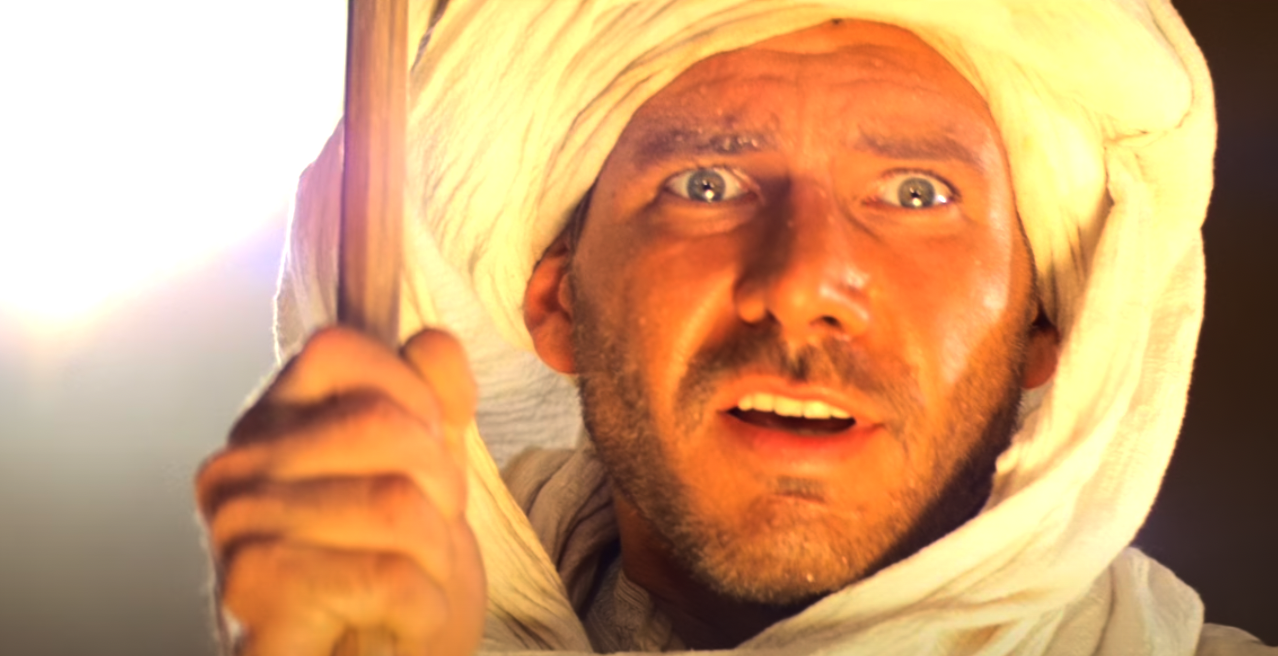
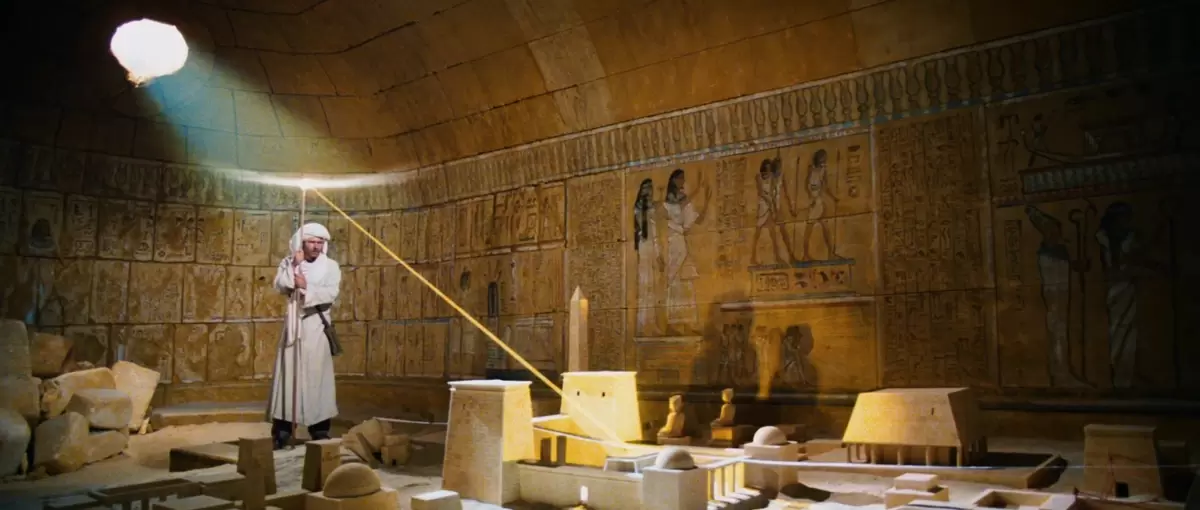
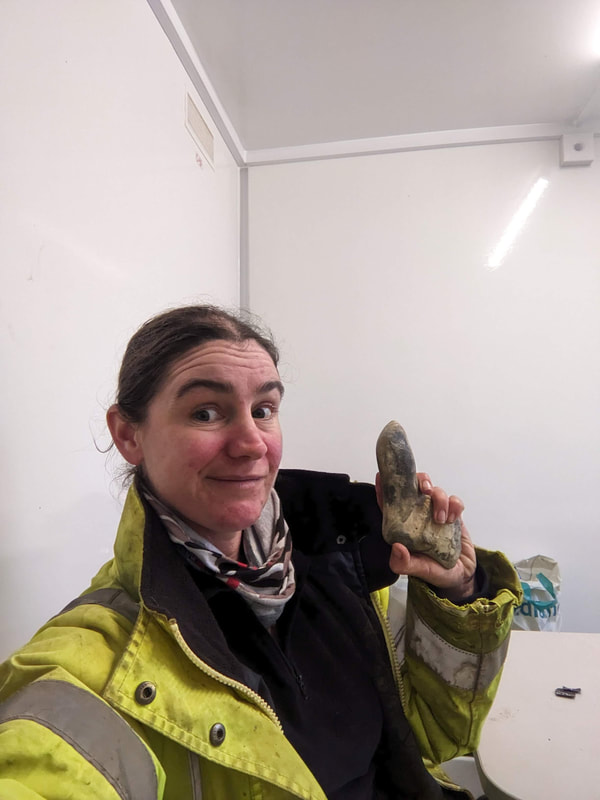
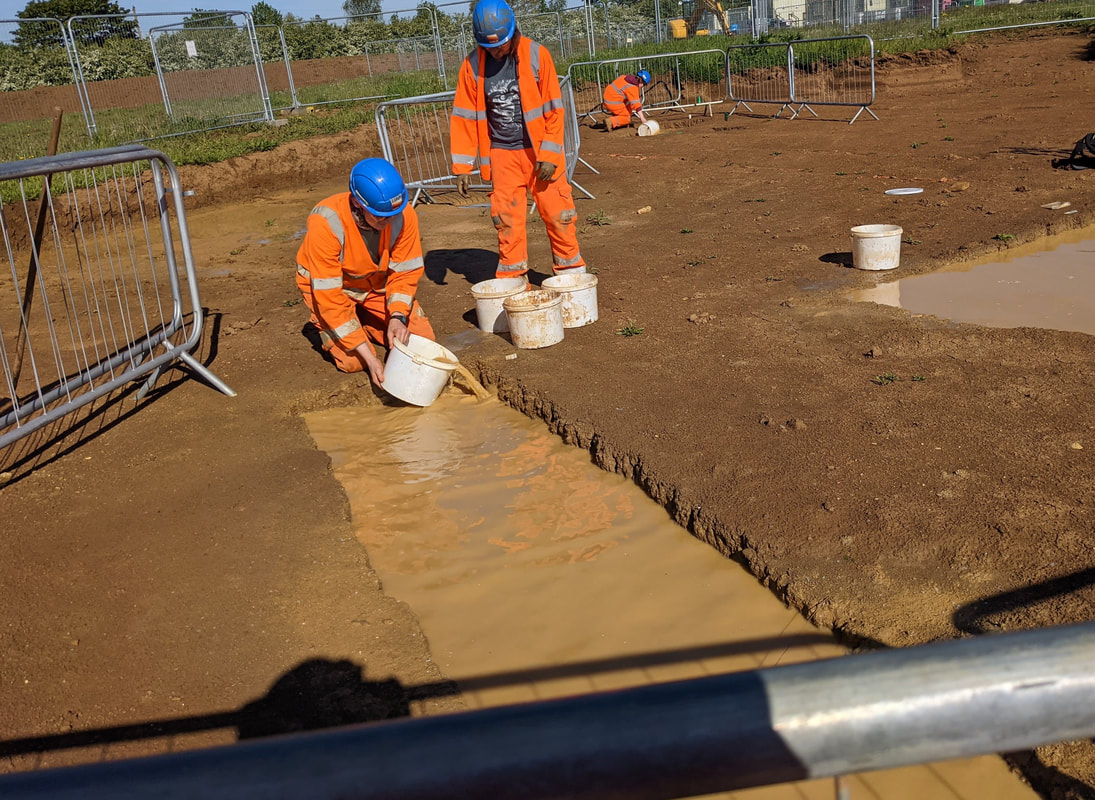
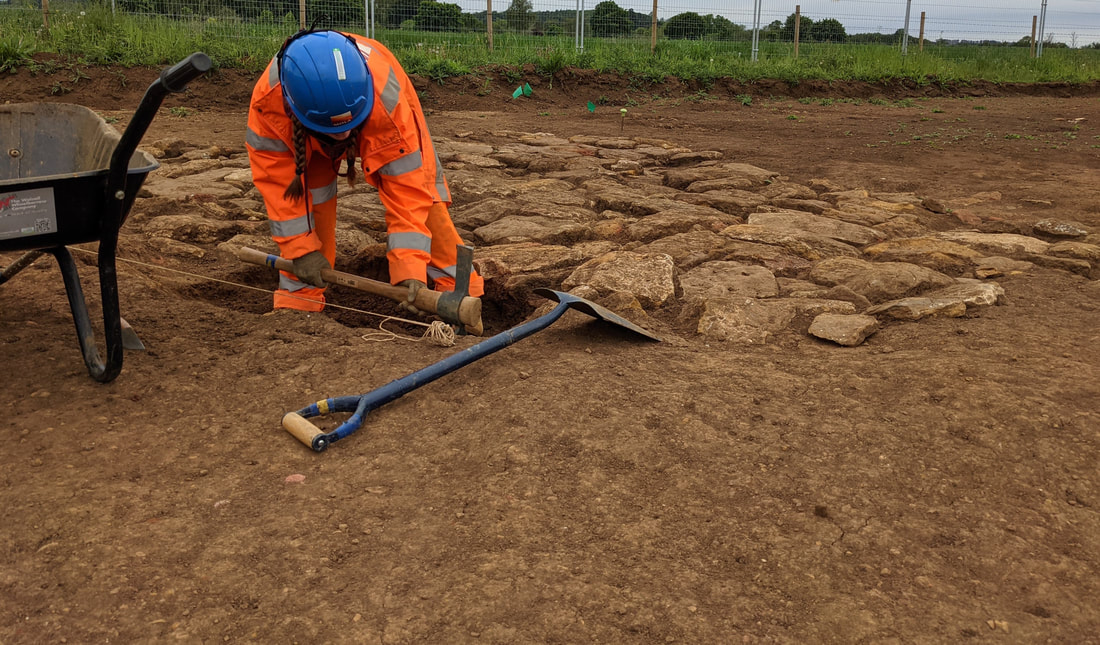
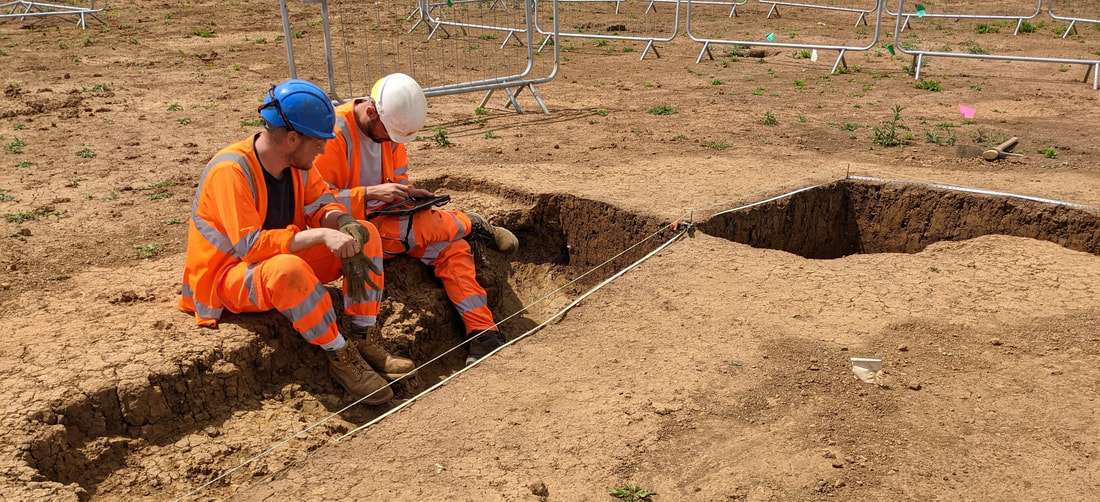
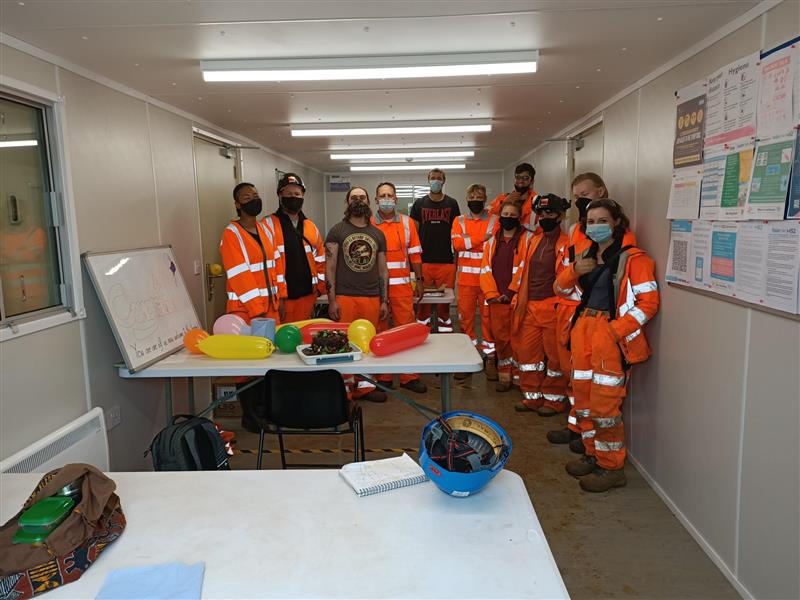

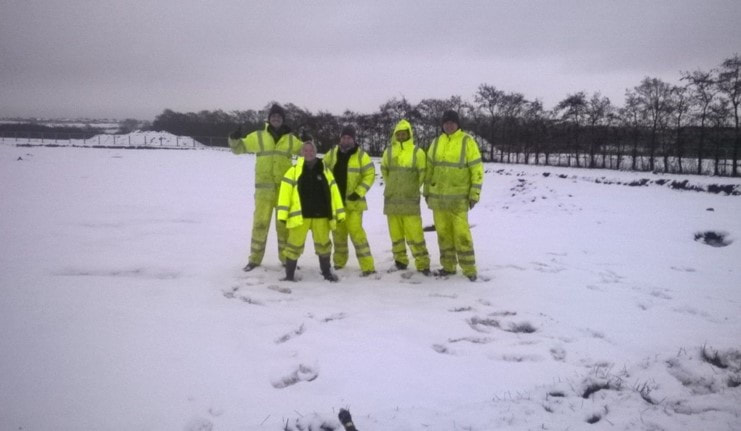
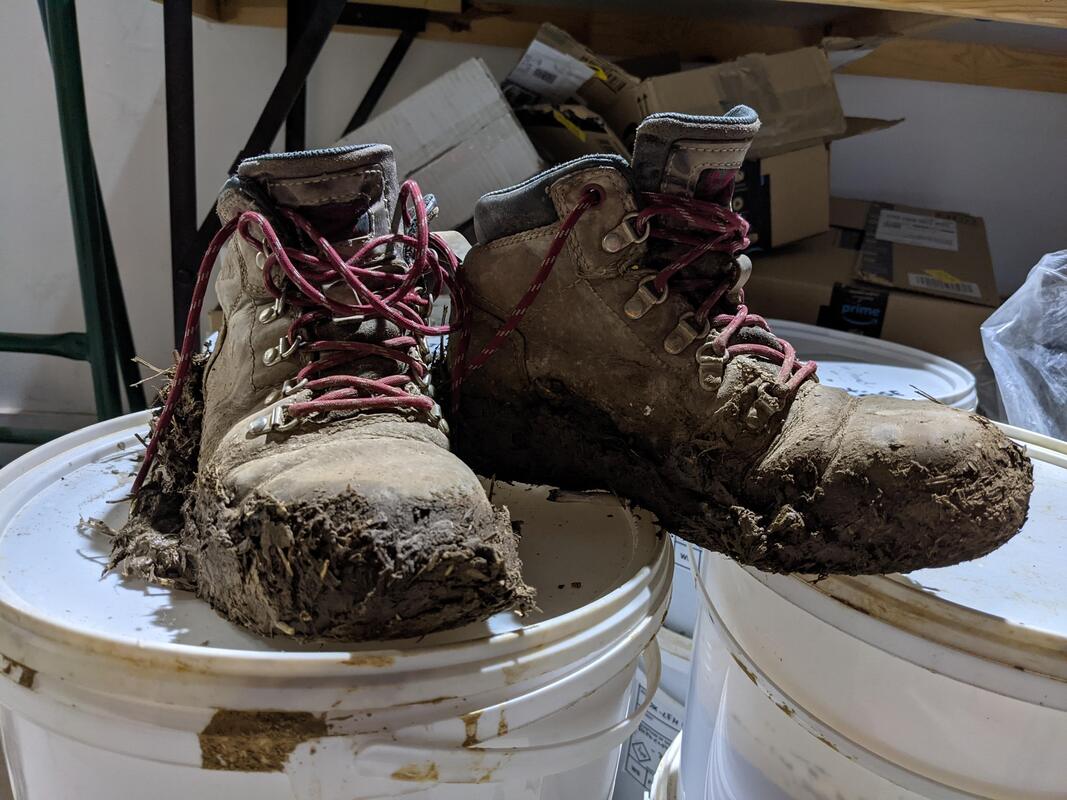
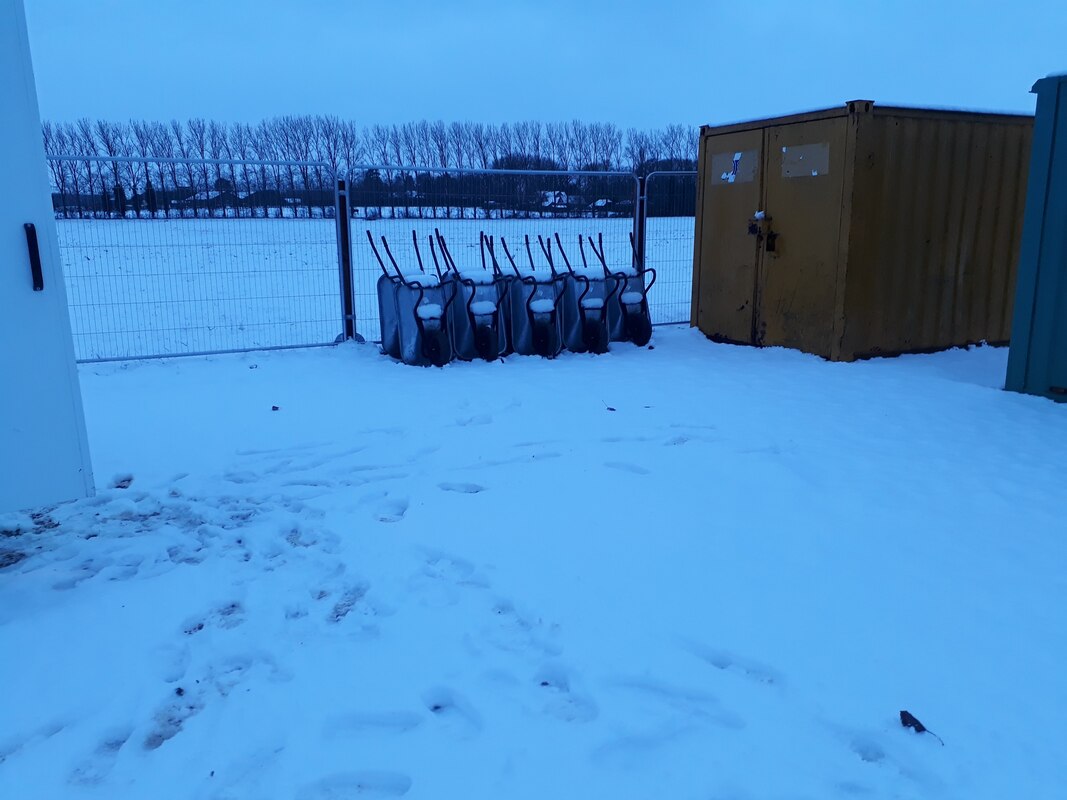
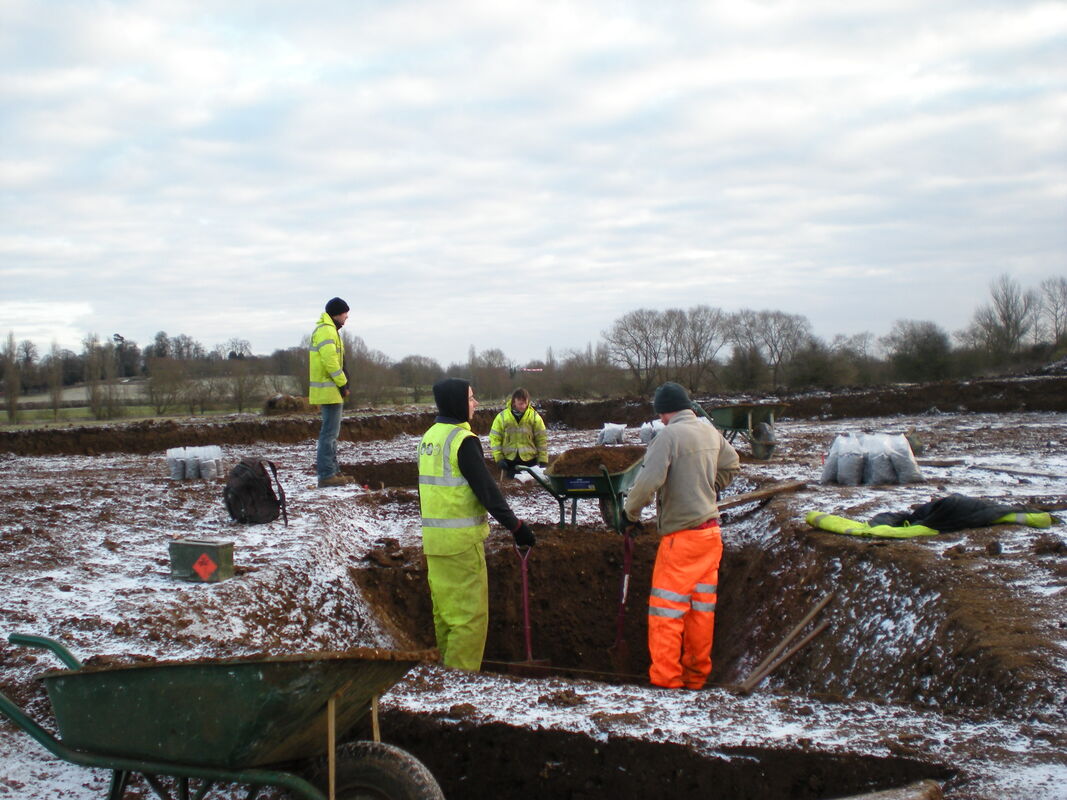

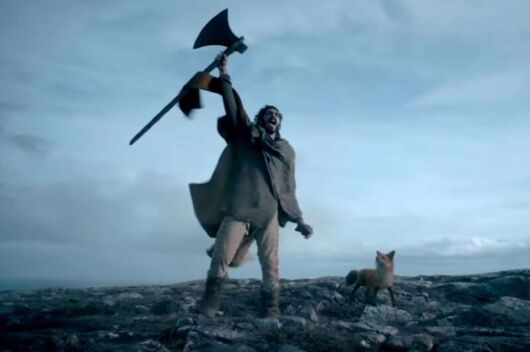
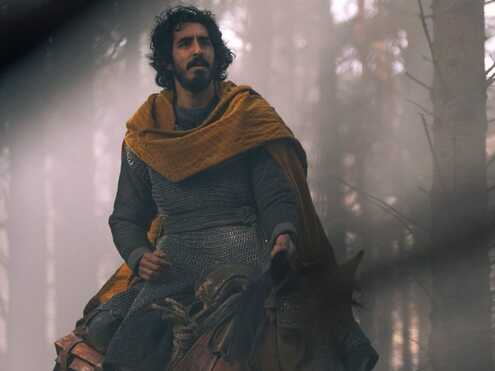

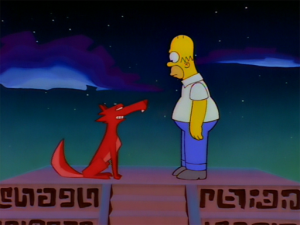
 RSS Feed
RSS Feed
